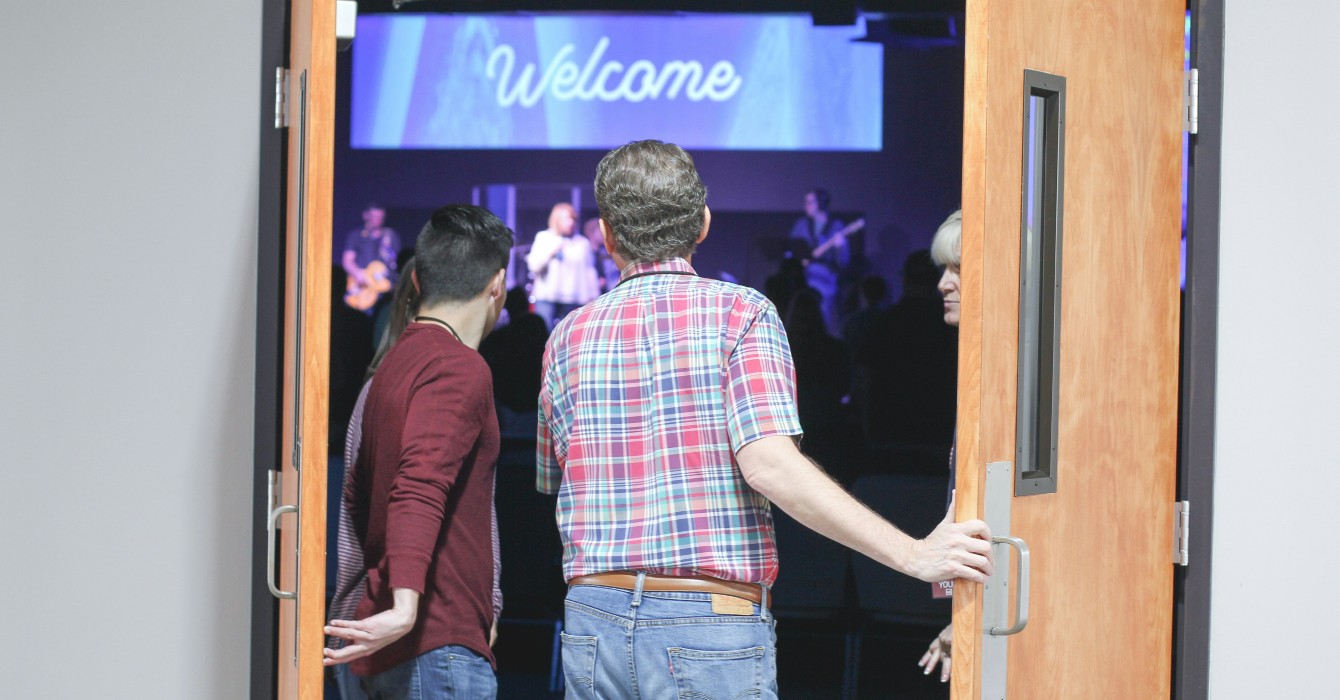Nonessential.
That’s the label that 800,000 federal employees received last October when Congress failed -- again -- to reach a timely budget agreement. As part of the government shutdown that followed, only essential employees were to report to work. The rest were told to turn off their computers, pack up their belongings and head home until further notice.
I know a few dozen of those “nonessential” government workers. They are members of the church I pastor, Mount Vernon Place United Methodist Church in downtown Washington, D.C.
Whatever you might have thought about the shutdown, whatever your political leanings, I saw firsthand how painful it is to be branded “nonessential.” Being told that your work would not be missed was a blow to both the ego and the bank account. I can only imagine how difficult it must have been for the supervisors who had to make those decisions: essential or nonessential?
As a church, we responded to the crisis. “God never shuts down,” our marquee proclaimed. “All are essential here.” We gave out free soup and prayed for those who had been sent home.
And although that incident has long since passed, I still think a lot about “essential” and “nonessential.”
A lot of pain can lie in the space between essential and nonessential. But it is a distinction the church needs to think about -- and to act upon.
Too many congregations, too many denominations today look and act like a branch of the Container Store. We pack every nook and cranny in our buildings with relics of the past. We cram our closets and storerooms with treasures once used for ministry, just in case they might be needed again. We furnish the parsonage with pieces that don’t fit anywhere else but that we’re not ready to send to the thrift store. We imagine our future through the lens of our past, blinding us to our own unwillingness to let go of things that no longer work.
Back in 1960, Mount Vernon Place had 4,451 members, making it one of D.C.’s largest Protestant churches. When I arrived in 2005, we had 325 members on the rolls (average age, 82), with about 50 showing up on any given Sunday. Our chair of the staff-parish relations committee was 97; our finance committee chair, 93; our lay leader, 90.
We had $1 million in the bank, but since we couldn’t imagine a brighter future, we clung to the past, using our endowment to pay for programs and ministry that our tithes and offerings once covered.
Though the church had changed dramatically, we kept using the same “containers” for ministry we had used back in the 1960s. We had a full-time music minister, a part-time director of drama ministry and six paid soloists. As our building directory proudly proclaimed, we had entire departments -- Music. Drama. Social Concerns. -- each with an office.
Sunday school classes that once had 100 members had dwindled to a dozen people who would not let go of either their classroom or their preferred way of learning. Because of a long-standing partnership with a Chinese Community Church, we advertised four different services: Prayer and Praise, Mandarin, Cantonese and Shared English. But the ads were lost on the young professionals who were moving into and transforming our emerging neighborhood.
We weren’t actually a branch of the Container Store. But we had lots of containers -- boxes and boxes of old ministry that needed to be emptied.
Over the past decade, our church has changed almost everything. We have transformed from a declining, elderly congregation to a growing congregation that is filled with young adults.
It all started with a painful process of discernment, separating “essential” from “nonessential” and then letting go of the latter. Members literally cleaned out closets throughout the building, giving or throwing away hundreds of items.
We cut staff. We sold off a portion of our property, using the proceeds to restore the church building and construct an adjacent, income-producing office building. Rather than hanging on to the past, the church refocused its energy on worship, people and the possibilities emerging around us.
“I am the true vine, and my Father is the vinegrower,” Jesus said. “He removes every branch in me that bears no fruit. Every branch that bears fruit he prunes to make it bear more fruit” (John 15:1-2 NRSV).
New life can emerge only when dead branches are cut away. And fruitful branches can produce more fruit only when they are trimmed and cut back a bit.
Anyone who has ever tried to grow anything -- whether a single flower or a garden or an entire farm -- knows this is true. Pruning is an essential part of agriculture. It is also essential to a church that is longing for new life.
Want to turn your church around? You can buy hundreds of books about church growth. But you can also follow the advice in those two verses of Scripture.
Clean out the closets and drawers. Clear the shelves. Organize a “pruning” day. But don’t stop with the building. After you’ve given the yard sale proceeds to missions, scrutinize the calendar on the back of the bulletin and every item in the church’s budget.
What is essential to being the body of Christ, making disciples for the transformation of the world? What is nonessential? What needs to be trimmed or cut completely? What is no longer producing fruit but draining precious resources? Imagine an annual audit of closets and calendars and then make it a reality.
The same applies to the calendars of pastors and staff. When a church is small, a pastor can handle most if not all of the pastoral care, worship planning, committee meetings and teaching -- and still have time to shop for Wednesday night supper.
But as the congregation grows, pastors have to let go. Branches that are bearing fruit must be pruned to bear more fruit. We have to cut back, entrusting others to do the work of ministry alongside us.
“Nonessential” is a painful word. Everyone is essential in the kingdom of God. But sometimes, people and ministry need to be pruned before we can see the new thing God is longing to do.








